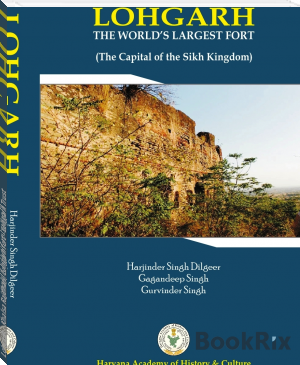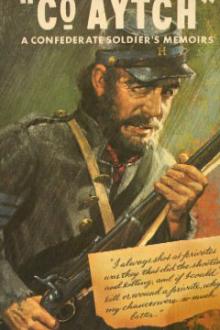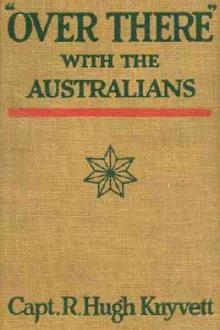Lohgarh - Khalsa Rajdhani, Lohgarh fort - Lohgarh Trust by S. Daljeet Singh Bajwa (books that read to you .TXT) 📕

- Author: S. Daljeet Singh Bajwa
Book online «Lohgarh - Khalsa Rajdhani, Lohgarh fort - Lohgarh Trust by S. Daljeet Singh Bajwa (books that read to you .TXT) 📕». Author S. Daljeet Singh Bajwa
Battle of Chappar Chiri and Occupation of Sarhind
When Wazir Khan received the news of the death of Khijar Khan and his two sons and the defeat of the Malerkotla Army at the hands of the Sikhs, he became very despondent; but, in spite of this, he was not disheartened. He had already sent emissaries to Delhi and Lahore asking them to send more soldiers and arms. Thus, he had assembled a very powerful army and a big arsenal of weapons. Besides, he had a very large number of not only horses but also elephants. Having assessed all the arrangements he decided to attack the Sikhs before they could move towards Sarhind as he did not want to fight inside or near his city. So, he led his army towards the place where the Sikhs had encamped and were planning to attack Sarhind.
Besides this, Wazir Khan played another trick. He sent Ganda Mall, a nephew of Sucha Nand (minister of Wazir Khan), to Banda Singh to pose himself as a rebel against Wazir Khan. It was planned by them that when the battle began, he (Ganda Mall) would flee the field, which would demoralize the Sikh soldiers and they will lose the battle and possibly Banda Singh too might be captured. With this foxy notion, Ganda Mall went to Banda Singh. Banda Singh listened to Ganda Mall but he would not trust him. In spite of this, he did not reject him and asked the Sikh generals not to place him in the front line.
Chappar Chiri3 site (now a village) is about 20 km from Sarhind. The Sikhs were resting there to plan an attack on Sarhind. When they got the news that Wazir Khan himself was marching towards them, they took their defensive positions. They had the benefit of defense of the trees and mounds. Banda Singh divided the whole army into four units, under the command of Fateh Singh, Karam Singh-Dharam Singh, Aali Singh-Mali Singh and Baj Singh. The Sikhs had, by then, six cannons too. These were put under the charge of Shahbaz Singh. Banda Singh stationed himself on a high mound to observe and give commands as necessary.
According to Khafi Khan, the number of the Sikh soldiers was 30 to 40 thousand, but they did not have good weapons. They had mostly swords, spears, arrows and only a few guns and just six cannons.4
On the morning of the 12th of May 1710, both the armies had taken positions in the fields of Chappar Chiri. Though it is often said that the number of the Wazir Khan’s soldiers was about one lakh but this seems to be an exaggeration. Another source mentions the number as 5-6 thousand horsemen, 7-8 thousand artillery and about 8 thousand ghazis (who had joined them in the name of ‘holy war’); thus, their number could be around 20 thousand.5
Wazir Khan’s army was led by elephants, which guarded them from the Sikhs’ attacks. His soldiers were raising the war cry of ‘Ya Ali’, ‘Ya Ali’ and ‘Allah Hu Akbar’. The Sikhs too began raising slogans of ‘Akal Akal’. Having assessed that the sound of Wazir Khan’s army’s slogan ‘Allah Hu Akbar’ was forceful and quick, they coined another war cry ‘Fateh Darshan’ which had the same sound effect as that of ‘Allah Hu Akbar’.6 Some writers believe that Banda Singh never coined ‘Fateh Darshan’ and it was, like other concoctions, created by Ratan Singh Bhangu. But this is not true; Elliot and Dowson have referred to this in clear words.7
When the battle began, the Sikhs, in order to attack the Sarhindi soldiers, needed first to remove elephants from the scene; so, they began throwing cannon balls at the elephants. This achieved the desired effect and some of the elephants were badly wounded. These elephants
screamed, trumpeted and began retreating, thus wounding several of the soldiers of their own army.
This angered Wazir Khan and he ordered his men to shower the Sikhs with cannon balls. But, as the Sikhs had the protection of trees and bushes, these balls did not affect them much. On the other hand, the Sikh cannons began shelling the Sarhindi cannons. Soon, the Sarhindi cannons were silenced because their masters (operators) had been killed by the Sikh canons. Since the Sikh soldiers were not under direct attack, their horsemen pushed forward and entered the front line of the Sarhindi army. Soon there was full fighting in the midst of the Sarhindi army. The Sikh soldiers began cutting the enemies like carrots. In minutes, hundreds of them were slain. This frightened them and they began running away. The first to desert were the ghazis (recruited in the name of ‘holy war’) as a very large number of them had already been killed.
Now, Ganda Mal, whom Wazir Khan had sent to infiltrate into the Sikh army, too appeared in his true colours; he ordered his men to flee from the battle-field. This, of course, created confusion in the Sikh camp also. When Banda Singh saw this, he came down from the mound and went to the front lines to encourage the Sikhs. He inspired them saying ‘Guru is waiting to embrace you in his arms. Let us annihilate the cruel enemies or embrace martyrdom.’ These words rejuvenated the Sikh soldiers and they made another fierce attack on the Sarhindi army. Finding his soldiers over-awed, Wazir Khan himself went to the soldiers and inspired them in the name of Islam and Allah. His minister Sucha Nand too joined him. Finding Wazir Khan and Sucha Nand near them, the Sikh soldiers attacked the enemy so forcefully that most of them began fleeing from the battle-field in order to save their lives. Some Sikh soldiers chased them. But, they did not kill the coward Sarhindi soldiers. They allowed them to retreat after leaving their horses and weapons. The Sikhs spared their lives.
After this, several Sarhindi soldiers fled from the front line. Soon a hand-to-hand fight began. During this fight Baj Singh and Sucha Nand came face to face. On seeing Baj Singh, Sucha Nand was frightened and
he began trembling as if he were facing his death. Coward Sucha Nand took no time to run away, and, he did not stop before he reached Sarhind.
Wazir Khan8 was still there, encouraging his soldiers; sitting on his elephant, he was fully active in the frontlines; and when Baj Singh and Fateh Singh saw him, they rushed towards him and attacked him. Wazir Khan fought with great defence but was killed in the hand-to-hand fight with them.
Some Sikhs tracked down Sher Mohammed Khan of Malerkotla too. Just a couple of days earlier he had fought against the Majha Sikhs at Behlolpur (in which his brother and two nephews had been killed and he himself was wounded); now, here, he was the second in command at Chappar Chiri. After the death of Wazir Khan, Sher Mohammed Khan came in the front lines but was killed soon; and so was his other brother Khawaja Ali.9 When all their commanders were killed, the remaining Sarhindi soldiers also surrendered and begged for their lives. The Sikhs told them: ‘You need not worry; we do not attack those who surrender’; and they (Sikhs) let them leave safely but stripped them off their arms.10 This battle lasted only for seven to eight hours. By noon, the Sarhind army had been totally routed.11
How was Wazir Khan Killed: There are several versions of the death of Wazir Khan. According to Khafi Khan, Wazir Khan was hit by a bullet. According to him Sher Mohammed Khan had attacked Binod Singh. But, at the same time a bullet hit Wazir Khan and Sher Mohammed Khan rushed to help him.12
According to Kanhaya Lal too, Wazir Khan was killed by a bullet.13 But Latif says that Wazir Khan was killed by an arrow.14 According to Mir Ahsan Ijad (in Shah Nama), Wazir Khan saw Banda Singh and moved towards him to attack him. When Baj Singh noticed this he kicked his horse and came in between Banda Singh and Wazir Khan. Wazir Khan shot his spear at Baz Singh which the latter caught with his hand and threw the same back towards Wazir Khan. This spear hit the horse of Wazir Khan and he fell down. Even in this position, Wazir Khan shot an arrow at Baj Singh which pierced the arm of the latter. At this moment
Wazir Khan attacked Baj Singh with his sword too. But, before Wazir Khan’s sword could hit Baj Singh’s body, Fateh Singh gave a strong blow with his sword which almost chopped off the right arm of Wazir Khan, and with another blow his head too was severed. Yar Mohammed, in Dastur-ul-Insha, writes: “Wazir Khan’s head was hung on a spear and his trunk was dragged behind a cart up to Sarhind”.
Figures of Casualties: According to common belief, 50 thousands Muslims and 30 thousand Sikhs were killed in this battle, which seems to be improbable and unrealistic. The figure of 5 thousand Muslims and 3 thousand Sikhs seems to be near reality. The number of the wounded is separate from it. Those who embraced martyrdom among the Sikh side included the highly revered of elderly Bhai Bajjar Singh (he had taught martial arts to Guru Gobind Singh). In this battle the Sikhs captured 45 big and small cannons, dozens of elephants, hundreds of horses and a large number of guns and sword etc.
After the battle was over, the Sikhs cremated their martyrs in large groups and bandaged those who were wounded. They did not have enough bandages, so they had to feel satisfied with whatever they had at hand. All this time the victorious Sikhs went on chanting hymns in praise of God. After cremation, the Sikh soldiers left for Sarhind, leaving some of them there to take care of the cremated bodies and to dispose of the ashes.
After covering a distance of about 20 kilometres the Sikh army reached Sarhind. It was not yet dawn. The gates of the walled city were closed from inside, hence they could not enter; they had to break open the gates and for this purpose they had to fight the garrison of the Sarhind regime. The Sikhs were carrying with them the body of Wazir Khan. They took a round of the main streets of the town to show the head and trunk of the body of Wazir Khan which, later, they hung from a tree so that the people might see with their own eyes the fate of the cruel ruler. It being an extremely hot weather; the body of Wazir Khan began stinking. The vultures began picking upon the body to get their share. This frightened the residents of Sarhind and they begged mercy of the Sikhs. Banda Singh sent them a message telling them that the
Sikhs would not trouble any innocent person; only the tyrant officials would be punished.
Now the Sikhs turned their attention to the Fort; but the cannons from inside began firing on the Sikhs. About 500 Sikhs were killed. The Sikhs then realized that they would be able not to enter the Fort for many days. They pitched one cannon at the top of a brick-kiln and fired cannon balls towards the direction of the cannons of the Fort, killing the cannon operators of the Sarhind army. Thereafter, the Sikhs began firing





Comments (0)